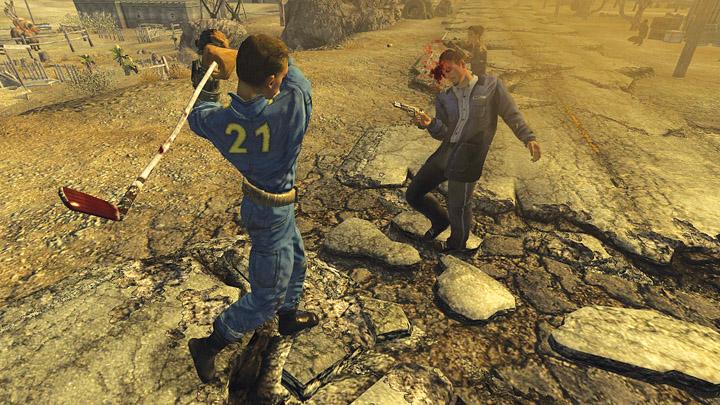Violent video games may not be the villain
Video game violence has created controversy as to whether it contributes to violence in children and teens.
October 24, 2010
As I blew the guy’s head off and laughed gleefully at the shower of gore spurting from his opened neck stump, I put the Xbox controller down and wondered to myself: “Have I become desensitized to violence?” I pumped a clip of acid bullets into the nearest set of teeth I could find and as they melted, I decided that, no, I hadn’t become desensitized to anything.
Because I was playing “Borderlands” — a video game, in case you’re unaware. Once I shut off my Xbox, I didn’t caress a revolver while leering at my sleeping roommate. I didn’t make a list of people I wanted to shoot. The reason I didn’t immediately become a creepy killer after playing a violent game is because it was a game.
When you’re 4, you can barely understand how people go to the bathroom, much less that violence in the media isn’t real. But now I’m older; I know that digestion is aided by peristalsis, and I know that blowing off a guy’s arm in “Fallout: New Vegas” isn’t the same as gleefully avulsing one in real life.
In fact, at the beginning of this month, I was a passenger in a car driving by Taco Time on Lincoln Way. As we passed I saw that a bicyclist had been struck by a car and was lain out on the curb while paramedics examined him. His jeans had been cut away, and I thought I caught a glimpse of his mangled leg. Whether or not I’d truly seen what I thought I had, the rest of my night was filled with the horror that I had seen something so grisly in real life. For little kids, the distinction might not be clear. For you and me, it’s so ho-hum that it’s a non-issue.
My revelation concerning violent imagery comes after playing “Borderlands,” an insanely violent game not intended for children. Until my first playthrough, I was unaware that there was a game where I could vaporize a guy’s entire upper body with a pistol.
I’m not the first person at Iowa State to notice hilariously overdone levels of video game violence; Iowa State University Distinguished Professor of Psychology Craig Anderson saw the increase and released a study earlier this year pointing out a causal link between violent videogames and aggressive behavior. My bare walls, which lack a bachelor’s diploma in psychology, do not permit me to disagree outright with Anderson. But I don’t think his research is the last piece in the puzzle as to why kids get so aggressive.
In my mind, there are simply too many factors that can make a person aggressive besides violent videogames. For example, Assistant Professor Christopher Ferguson of Texas A&M International University points out , Anderson’s study didn’t account for family violence exposure. According to Ferguson, this “pretty much wipes out any relationship between violent games and aggression, so the correlation is essentially zero once you control for family violence.”
Maybe it does wipe out the relationship, Chris. Maybe not. But the point that we agree on is that nobody’s outlook on life is defined solely by video game violence. That’s easy to forget, especially when violence in games increases with each passing year. But for some reason, I think abusive parents would be more likely to nurture little Jimmy’s future massacre than every film in the “Guinea Pig” series.
When his research was published in March, Anderson was quoted by ISU News Service as saying that, “just like your child’s diet and the foods you have available for them to eat in the house, you should be able to control the content of the video games they have available to play in your home.”
Even if video games are to blame for children becoming more aggressive, know that when your kid snaps and decides to re-enact that ear scene from “Reservoir Dogs,” you’ve got no one to blame but yourself. Well, yourself and Stealers Wheel.







